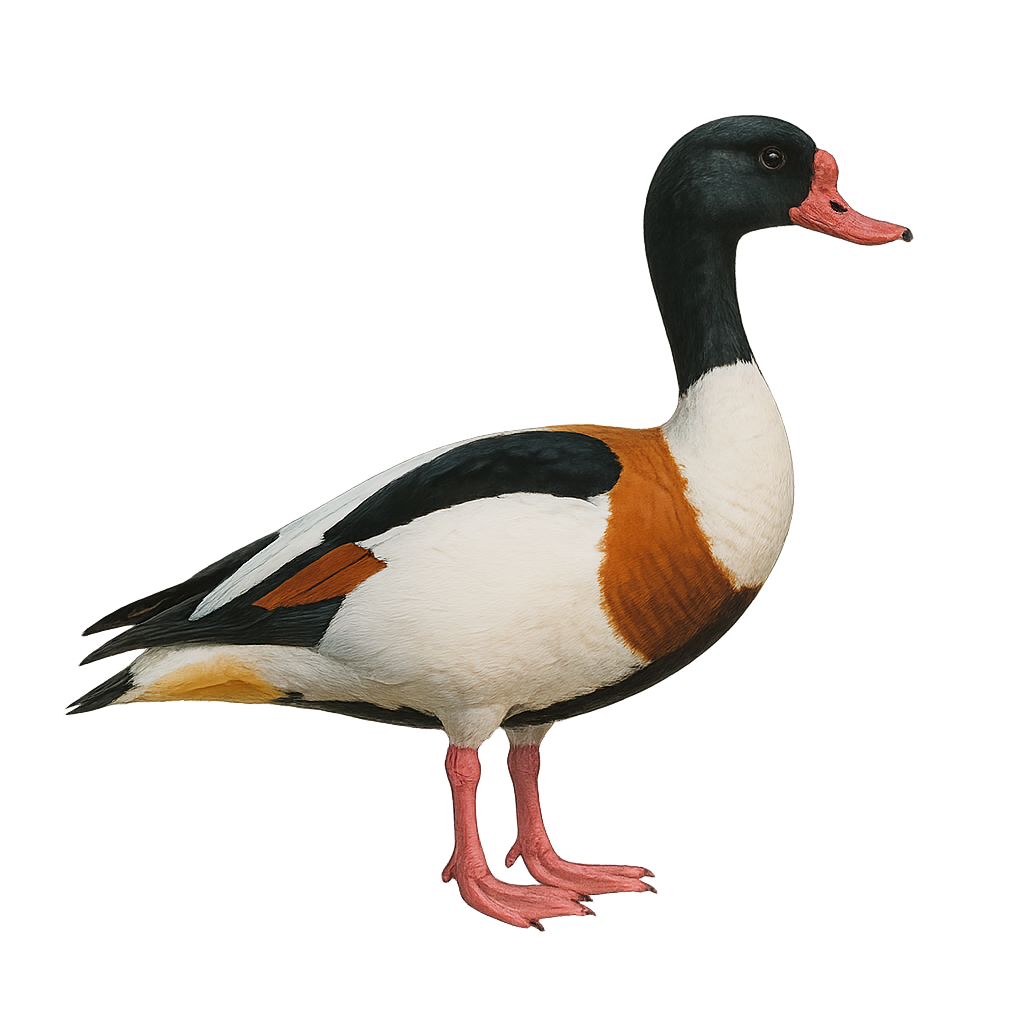Your wildlife photography guide.
Explore the common shelduck in detail, study its behavior, prepare your shots.
Where to observe and photograph the common shelduck in the wild
Learn where and when to spot the common shelduck in the wild, how to identify the species based on distinctive features, and what natural environments it inhabits. The WildlifePhotographer app offers tailored photography tips that reflect the common shelduck’s behavior, helping you capture better wildlife images. Explore the full species profile for key information including description, habitat, active periods, and approach techniques.
Common Shelduck
Scientific name: Tadorna tadorna

IUCN Status: Least Concern
Family: ANATIDAE
Group: Birds
Sensitivity to human approach: Not very shy
Minimum approach distance: 20 m
Courtship display: March to May
Incubation: 28-30 jours
Hatchings: April to June
Habitat:
Estuaries, salt marshes, lagoons, coastal mudflats
Activity period :
Primarily active during the day, with peak activity in the morning and late afternoon.
Identification and description:
The Common Shelduck is a large duck with a distinctive plumage, measuring between 58 and 67 cm in length. It is identified by its glossy greenish-black head, white body with a broad chestnut band, and bright red bill. Males have a prominent knob at the base of the bill, which females lack. This species inhabits estuaries, lagoons, salt marshes, tidal mudflats, and shallow lake shores, often in flocks. It nests in burrows or cavities, sometimes dug into dunes or embankments. The shelduck primarily feeds on aquatic invertebrates such as mollusks, worms, and crustaceans, filtered from the mud. While generally secure, it is vulnerable to coastal wetland destruction.
Recommended lens:
300 mm – adjust based on distance, desired framing (portrait or habitat), and approach conditions.
Photography tips:
Photograph the shelduck at low tide while it forages in the mud, or at sunrise to highlight the contrast of its plumage. Use a telephoto lens from a hide or natural cover to avoid disturbing it.
The WildlifePhotographer App is coming soon!
Be the first to explore the best nature spots, track rutting seasons, log your observations, and observe more wildlife.
Already 1 431 wildlife lovers subscribed worldwide

